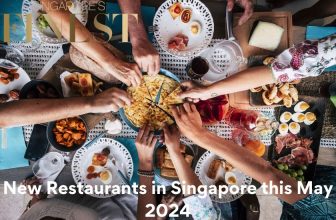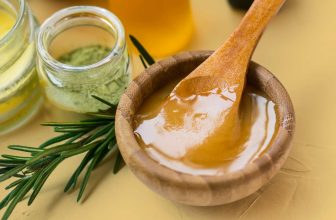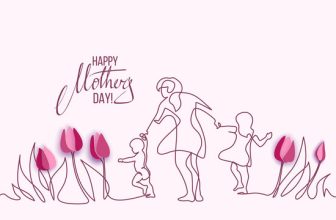
Embark on a culinary journey steeped in tradition and flavor as we delve into the vibrant tapestry of Chinese New Year Dishes. Beyond the festive red lanterns and joyous celebrations, the heart of Chinese New Year lies in the delectable array of dishes that symbolize prosperity, good fortune, and familial togetherness.
This guide invites you to explore the rich culinary heritage, from auspicious dumplings to symbolic fish dishes, uncovering the significance of each culinary masterpiece that graces the New Year’s table. Join us in discovering the culinary delights that mark this auspicious occasion and savor the unique flavors that make Chinese New Year celebrations a feast for the senses.

Best Chinese New Year Dishes
Hot Pot 火锅 (huǒ guō)
Hot pot is another dish with a lengthy history. Emperor Qianlong of the Qing dynasty is the biggest fan. When he hosted feasts for elderly and retired officials, hot pot with meat was always on the menu. His New Year’s Eve supper had 120 dishes for lunch and much more for hot pot.
Hot pots, despite their popularity among both commoners and nobility, are actually fairly simple. It’s just a sizzling saucepan with platters of raw meat and veggies. You may toss whatever you want into the pot. Wait until it has finished cooking before removing it and eating.
Vegetable Dishes
Spring is the time to plant fresh seeds. Traditionally, the Spring Festival is the perfect time to complete all of the veggies kept and preserved during the winter.
This meal, known as 田园素小炒 (tián yuán sù xiǎo chǎo), is a vegetarian stir-fry from the countryside. In addition to traditional greens, mushrooms, jujube, and Chinese cabbage are frequently included.
Nian Gao 年糕 (nián gāo)
Nian gao, commonly known as “rice cake” or “New Year cake” in English, is essential during Chinese New Year.
In ancient times, nian gao was solely used as offerings to ancestors and gods. They gradually become a classic meal for the Spring Festival. They are now accessible year-round, but they remain a festival-specific pleasure.
Nian gao has the same pronunciation as 高 (gāo, meaning tall or lofty). It’s a desire to be successful and “higher” every year. Each year will be better than the previous one. Some amusing parents prefer to persuade their children that consuming this would help them grow taller too.
They are either composed of sticky glutinous rice or yellow rice, which gives nian gao two distinct hues and textures.
Nian gao was already popular throughout the Wei and Jin dynasties (220–420). However, after more than two thousand years of evolution, there are an incredible number of variants. Nian gao from the north and south appear to be very distinct.
They are often savory in the south. Store-bought nian gao is hard and has to be cooked first. They are then steamed or cooked alongside vegetables and meat.
Steamed Chicken 蒸鸡 (zhēng jī)
A whole chicken is another representation of family. One chicken is sufficient to feed an entire household due to its high protein content. It denotes reconnection and rebirth. People retain the skull and claws to convey this good significance.
After cooking, folks will first present the chicken to their ancestors. Praying to the ancestors for blessings and protection is still an important element of the Spring Festival and Chinese culture, despite the fact that it is today considered superstition.
In Hubei, chicken soup is the first meal of the new year. It’s a wish for peace. The primary laborers of the family should eat chicken feet, commonly known as “phoenix claws” (凤爪 / fèng zhuǎ). This is designed to help them hold onto their fortune. Chicken wings allow you to fly higher, whilst the bones indicate remarkable success.
Some people prepare eggs as their first meal. The egg white and yolk signify gold and silver and are easy presents for friends and neighbors.
Steamed Fish 蒸鱼 (zhēng yú)
Fish is essential during the Chinese New Year. Why do fish represent excess and wealth? In Chinese, fish 鱼 (yú) has the same sound as 余, which means “surplus” or “extra.” The customary blessing is 年年有余 (Nián nián yǒuyú), praying for a surplus (or fish) of food and money each year.
Half of the fish is eaten for dinner, the other half the next day. This is intended to extend the excess while also making the future rich. A whole fish also symbolizes a peaceful and whole family.
Some would cook a bighead carp. However, just the midsection is eaten, leaving the head and tail intact. The Chinese term 有头有尾 (yǒu tóu yǒu wěi) means “to have both a head and a tail.” This is a reminder to finish whatever you start and hope for good outcomes. During supper, put the fish head toward the guests.
In Hunan, red peppers are added after broiling the fish. Red is a celebratory and auspicious hue, and the spicy heat symbolizes hopes for a flaming (thriving) company in the new year.
Noodles 长面 (cháng miàn)
Dumplings and noodles are sometimes cooked together. This is known as gold silk and gold ingots. It’s yet another dish used to convey people’s wishes for wealth.
Though the origins of noodles are hotly debated, there is no denying that they are a mainstay in Chinese cuisine.
Initially, they were named “soup pancakes” (汤饼 / tang miàn). People would tear the dough into little pieces and place them in the kettle. It wasn’t until the Tang Dynasty that people began rolling them into the familiar noodle shape.
Long noodles are popular during the Chinese New Year celebration.
They are also known as 长寿面 (cháng shòu miàn), which means “longevity noodles.” They cannot be chopped and should not be chewed. The longer the noodle, the longer your life will last. This requires a lot of slurping.
Noodles provide for a wide range of side dishes and seasonings. Many veggies and meats carry symbolic connotations as well.
Dumplings 饺子 (jiǎo zi)
Dumplings, another popular delicacy, are the northern version of spring rolls. They are eaten on all special occasions, but are especially important around Chinese New Year. That is a lot of dumplings! But there is a good explanation.
The Chinese word for dumplings, 饺子 (jiǎo zi), is pronounced similarly to 交子 (jiāo zi). The characters 交 (Jiāo) and 子 (zi) represent “exchange” and the midnight hour, respectively. Jiāo zi represents the transition from one year to the next. All dumplings should be wrapped now. Eating dumplings symbolizes letting go of the past and embracing the future.
There are too many different fillings to count. You can have any sort of meat, veggie, and taste you want. They often contain Chinese cabbage, green onion, pork, and shrimp (similar to spring rolls).
Spring Rolls 春卷 (chūn juǎn)
Eggrolls are undoubtedly the most well-known Chinese dish. However, they are truly “spring rolls.” They are eaten at the Spring Festival in Southern China to celebrate the arrival of spring. Specifically, they are consumed on the first day of spring (lì chūn). They can be served as a dinner entree, appetizer, or snack.
Most people are familiar with the deep-fried variant of spring rolls. In China, they can also be steamed or baked. The size and form range from small rectangles to big flat circles.
During the Jin Dynasty (c. 265–420), people would arrange spring rolls and vegetables on a dish. This was referred to as the Spring Platter (春盘/chūn pán). During the Spring Festival, emperors presented officials with Spring Platters. Each plate is estimated to have cost thousands.
Spring roll skins are produced with wheat, water, and salt. Your particular preferences will determine the filling. Traditionally, the stuffing consists of pork, Chinese cabbage, shiitake, carrots, and spice.

As we conclude our gastronomic journey through the exquisite world of Chinese New Year Dishes, the richness of tradition and the flavors of familial celebration linger in the air. Each dish, meticulously crafted and laden with symbolism, tells a story of prosperity, good fortune, and the cherished bonds of family. The culinary artistry displayed during Chinese New Year celebrations is more than a feast for the palate; it is a cultural symphony that resonates with tradition and joy.
May the essence of these cherished dishes linger in your memories, bringing abundance and warmth to your celebrations, not just during the festive season, but throughout the year. Here’s to a flavorful and prosperous journey ahead!




